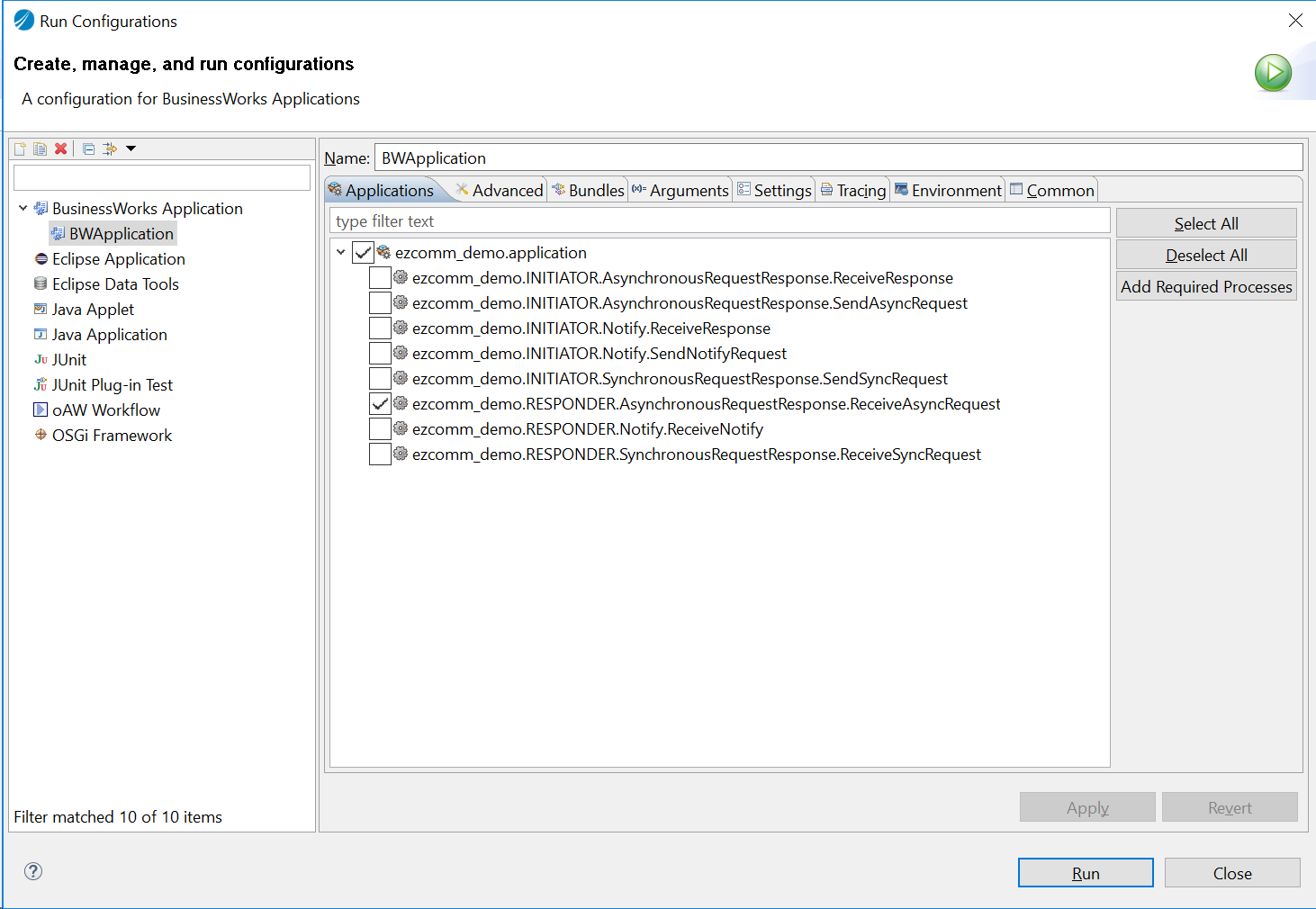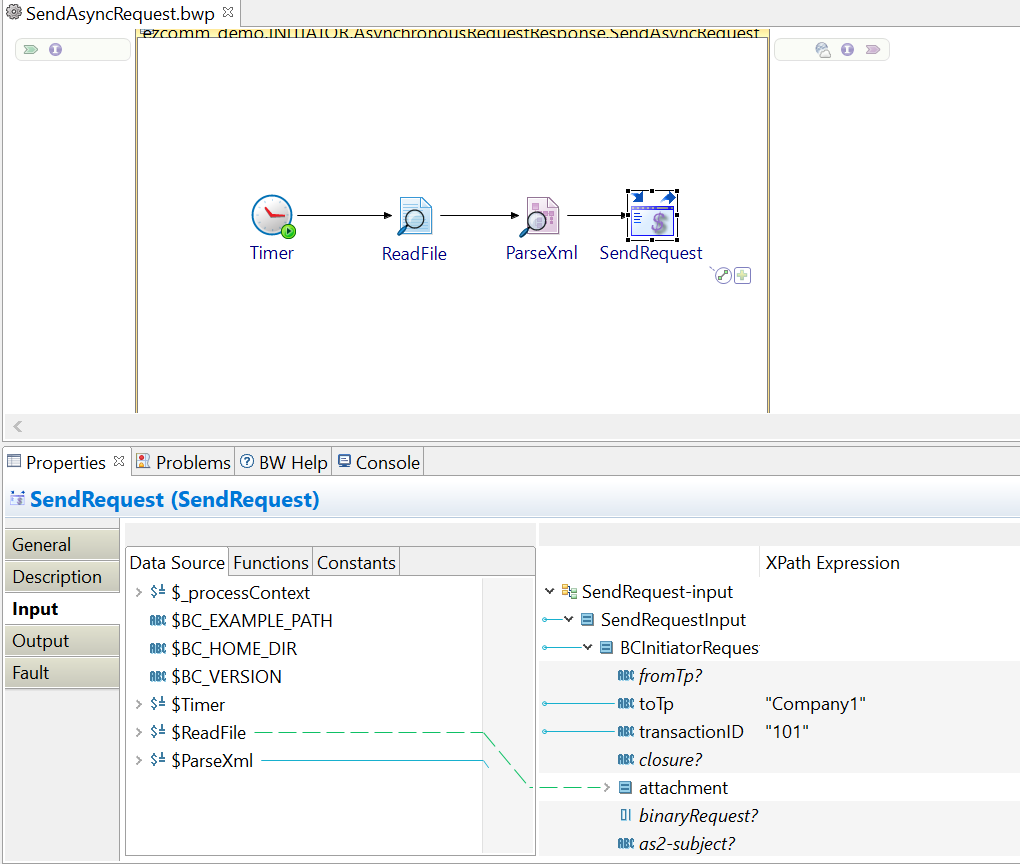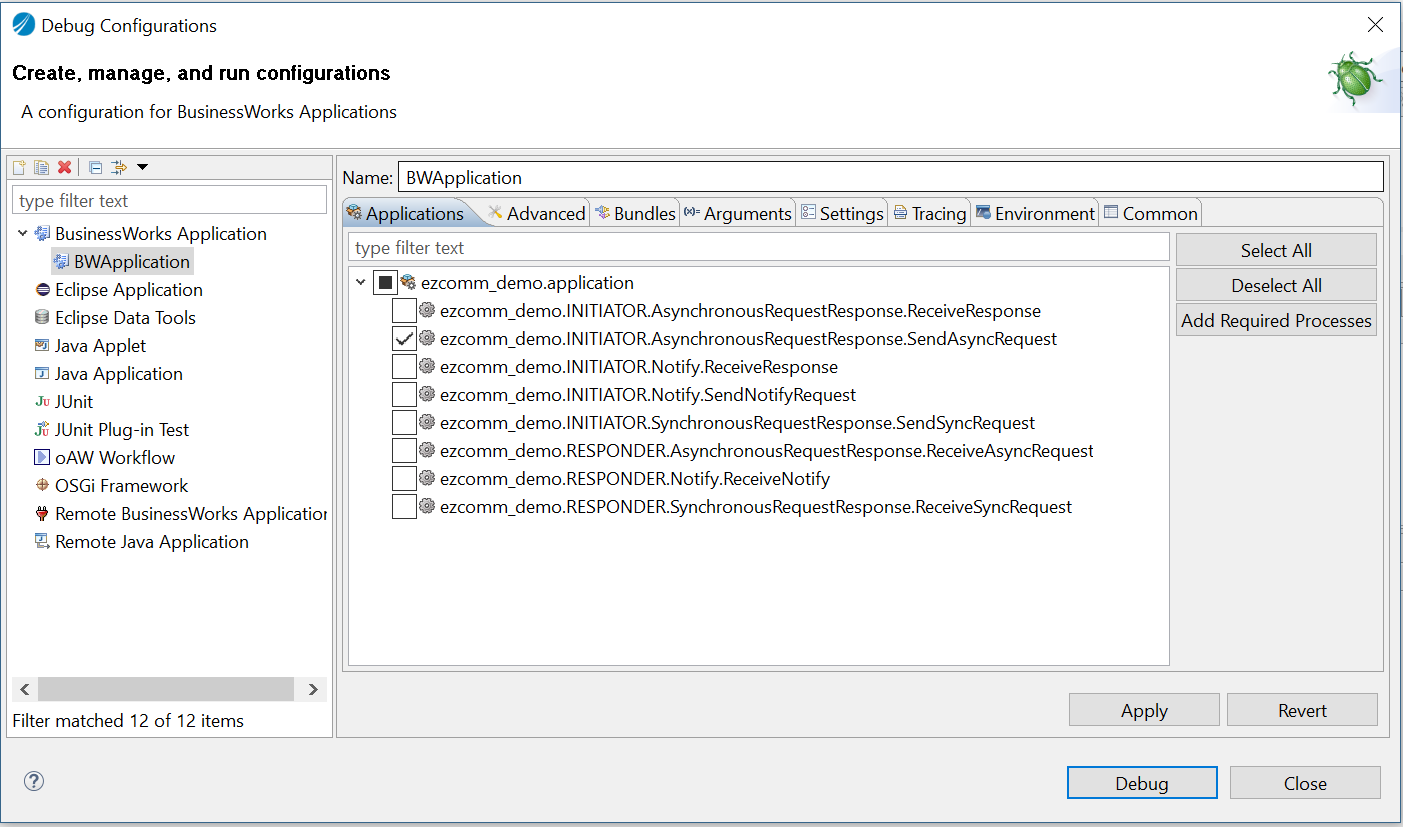Running the Tutorial
To see the complete tutorial for the Asynchronous Request Response operation, you must run it on both machines, Buyer and Seller.
Running the Tutorial on the Seller Machine
- In TIBCO Designer, expand the RESPONDER folder.
- Click Asynchronous Request Response > Receive Async Request.
- Click Read File > Input Tab > ReadActivityInput and verify that the path given in the fileName field is valid.
- Click Run Configurations.
- Click Start testing viewed process.
- Select the Receive Async Request(current) check box.
- Click
Load Selected.
Once the request is received from the Buyer machine, this process receives the RESPODER.REQUEST message and then send the RESPONDER.RESPONSE message to BusinessConnect Container Edition.
Running the Tutorial on the Buyer Machine
- In TIBCO Designer, click INITIATOR > Asynchronous Request Response.
- Click the Send ASync Request process.
- Click the SendRequest activity.
- Enter Buyer in the fromTP field and Seller in the toTP field in the Input Tab.
-
Click Read File > Input Tab > ReadActivityInput and verify that the path given in the fileName field is valid.
- Click Apply and Save.
- Click the Run Configurations.
- Select two processes:
- Click Load selected.
It sends an INITIATOR.REQUEST to the INITIATOR BusinessConnect Container Edition. At the same time, the Receive Response activity receives the INITIATOR.RESPONSE message.
Copyright © Cloud Software Group, Inc. All rights reserved.






